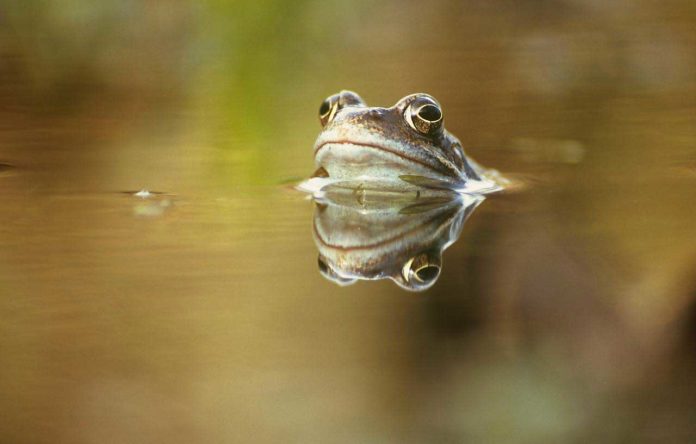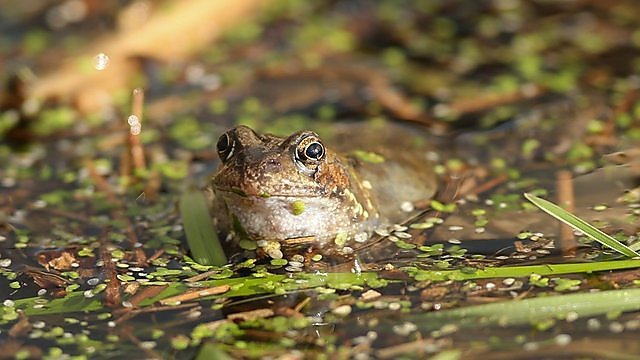A deadly frog disease is spreading due to climate change. It is predicted that the entire frog population may vanish in the next 5 decades.
According to recent research involving the University of Plymouth, climate change is increasing the spread of a fatal disease called Ranavirus, which infects common frogs in the UK. Disease outbreaks are also predicted to become more severe more widespread, and occurring over a greater proportion of the year within the next few decades if carbon emissions continue at their current rate.
Ranaviruses are members of Iridoviridae and are known to cause morbidity and mortality in amphibians, reptiles, and fish. Ranaviral disease, infection, and mortality have now been reported on every continent. What’s more, infection by a ranavirus has now been made a “reportable disease” by the OIE (the CDC for animals).
During the study, scientists applied the three‐pronged approach to understanding the effects of temperature on ranavirus epidemics in UK common frogs: cell cultures, live models, and historical data from the Met Office and Froglife’s Frog Mortality Project.
They also involved the research that demonstrates warm weather – where temperatures reach 16°C – dramatically increases the risk of Ranavirus causing a disease outbreak in common frogs.
The study helps explain the seasonality of the disease, with incidence peaking during the hottest months of the summer, showing that climate change could see outbreaks becoming more frequent from April to October.
Disease outbreaks in the spring could result in the deaths of large numbers of tadpoles, which could have repercussions for population survival.
Stephen Price, a lead author from ZSL’s Institute of Zoology and UCL, said: “Climate change isn’t something that’s just happening in faraway places – it’s something real and present that’s already had hard-to-predict impacts on wildlife in our own back gardens here in the UK. A number of scientists have already alluded to the fact that climate change could increase the spread of disease, but this is one of the first studies that provide strong evidence of the impact of climate change on wildlife disease, and helps to explain how it may facilitate the spread of Ranavirus across the UK.”
Dr. Robert Puschendorf, Lecturer in Conservation Biology at the University of Plymouth, said, “This is yet another example of a lethal disease having an increased impact on natural systems due to a changing climate. There are no silver bullets left to sort this out at a global scale other than the obvious – appreciate the negative impact they are having and stop relying on fossil fuels as we go about our daily lives.”
According to the study, frogs may be better able to cope with infection if they have areas in which they can cool down – adding log piles, vegetation or nearby shady patches as well as keeping ponds deep will help reduce the level of sun exposure frogs receive, and thus reduce the growth rate of the virus.
Professor Trenton Garner, at ZSL’s Institute of Zoology, said: “Many studies in amphibian disease cannot do much beyond saying ‘we have a problem’. This research offers a number of options for mitigation; however, this is only a short-term solution of course – if we don’t eventually slow and reverse human-driven climate change, we, unfortunately, can only expect things to get worse for our amphibians.”

